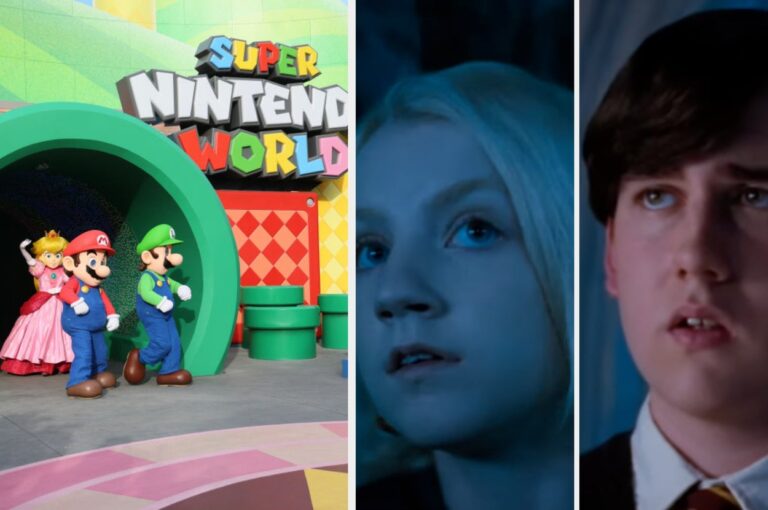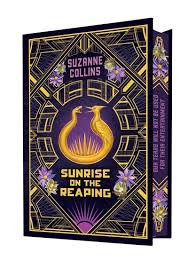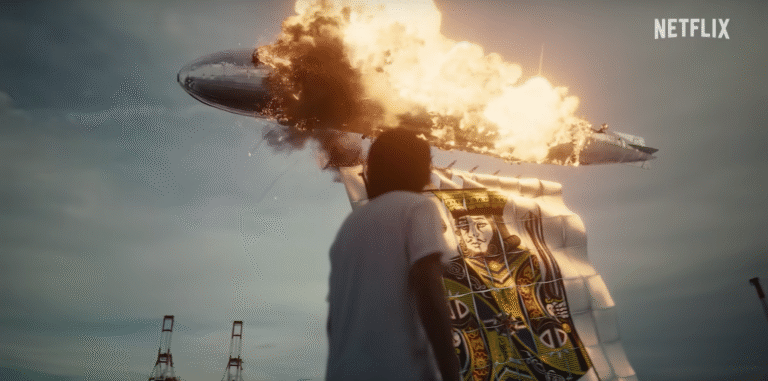I received this email from Justin Clavet last month and he has given me permission to post it with my response. It touches on one of the keystones of our conversations here at HogwartsProfessor, namely, the relative value of various media experiences of the same story.
Justin agrees to some extent with my thesis that screened adaptations of story are not only not imaginative experiences of the work per se but destructive of the reading experience had before or after it. His question is about the theme park experience of a work, specifically the Universal Studios Harry Potter theme parks.
It’s a wonderful question and it comes from a serious reader whose favorite Rowling work is Casual Vacancy, the second member of that very exclusive club I have now met. We’ll start with his letter and then after the jump I’ll offer my first thoughts about his question in hope of beginning a conversation about how to understand the immersive experience of a theme park based on a written work.
Hi John,
I am probably one of the few who came to the books by way of the Universal theme park experiences. I ignored the books as a child – in spite of my friends’ recommendations – because everyone was reading them and I didn’t want to be part of the crowd. (Kids make some stupid choices.) But when I was living and going to college in Orlando in my 20s, I had an annual pass for the Walt Disney World and Universal Orlando theme parks (for a Florida resident at the time, this was cheaper entertainment than a monthly cable bill, if you can believe it).
I was enchanted by the Diagon Alley and Hogsmeade themed lands there, having only seen films 1-5, and never having read a single page of the books. I ordered myself a complete box set of the Bloomsbury editions and got started. I switched back and forth between reading the text and listening to Jim Dale’s excellent audiobook narrations. I fell in love and my life was changed.
(I managed, ca. 2018, to read about the death of Dumbledore in the Half-Blood Prince and the triumph of Harry over death and Voldemort in the Deathly Hallows unspoilt. I don’t know how many people of my generation could say that about their first reading of the books in their mid-20s. That was a real blessing.)
After finishing the Harry Potter series, I dove right in to The Casual Vacancy and the Strike-Ellacott stories. Somewhere in between, I found this great site of yours.
All that as background to say…This is one piece here to which I keep coming back. I agree with you entirely about film “adaptations” and their corrosive effects on the stories we read in books. It diminishes our imagination (making forceful intrusions, like seeing Maggie Smith’s face and hearing Maggie Smith’s voice when reading about Prof. McGonagall) and corrupts our memories (like thinking that Harry saw Peter Pettigrew on the Marauder’s Map). Also, so much of the symbolism and meaning is lost by the omissions and abbreviations necessitated by the medium’s runtime limitations. In short, it’s a cheapened experience that can injure our reading enjoyment. I’d love to read more about your thoughts on the “neo-iconoclasm of film.”
I’ve come to the decision that I will no longer watch motion picture “adaptations” of the stories I love. The Casual Vacancy is my favorite of Rowling’s works, and I think that TV series is a particularly bad adaptation, even being produced by her own company. I have seen some of the early episodes of the CB Strike TV series but have no intention of ever continuing because I have fantastically vivid images of Robin and Strike in my head and I don’t want to start seeing Holliday Grainger and Tom Burke there instead.
I still enjoy the medium of theme parks, though. Done well, they can be a most inviting and excellent collaboration of the arts of architecture, landscaping, gardening, interior design, cuisine, musical composition, and storytelling – altogether, placemaking, if you will. Unfortunately, they are also likely the most commercialized setting of these arts.
My first three thoughts on this subject:
(1) The Context of the Theme Park Question: Justin’s comment was originally written on a thread beneath a 2018 HogwartsProfessor post, Imagination vs Interactive Technology: The End of the Potter Saga’s Magic? In it I reviewed the five ways of entering into Rowling’s Wizarding World sub-creation: Books and Audio, Film, Theme Parks, Video Games, and Pokemon Harry and Virtual Reality. If I say so myself, it is a very challenging post, a cry in the wilderness contra mundum, a world in which screened images and deanimated animations are seen as unalloyed goods. Please do read the whole thing for a better understanding of Justin’s question about theme parks and his request for more about “the neo-iconoclasm of film.”
The two most relevant paragraphs from that post, I think, are the ones about theme parks and in conclusion about the value and merits of the five experiences of story. About theme parks, I wrote:
Theme Parks — interactive experience with films
The next step away from story [after film adaptation] is the departure from the tale having been told. A theme park “adaptation” is even less of the story than the film recreation of it; at least the movie has the characters as described (one hopes) and something like the scenes and story events — inciting incident, story turn, climax, denouement, et cetera — created in words for our imaginations by the author. All a theme park can offer is the scenery, the story body deanimated. The sense experience is as many times increased from text and film as the imaginative experience is diminished, even extinguished.
My conclusion about the five ways was uncompromising:
Note that any story can descend from point one [the written story one enters through the imaginative faculty] to point five [Pokemon Harry and Virtual Reality] — but no story experience rises to point one from any of those below it. Some film goers move from the movie experience to pick up the books and read them; Keith Hawk, the host of the MuggleNet Academia podcast and a man with a remarkable command of Saga details, is one of them. Color me skeptical that the theme parks, video games, or VR/Pokemon Harry players will make that jump, or, sadly, that those who experience the film first are capable of having the experience of those who have not….
Here’s the thing. Before the films were all released, before the theme parks, before the pervasive rush to “experiential marketing” and money-making from fandom, readers created their own secondary imaginative experiences with the Harry Potter texts. The positive direction of fan engagement with respect to story beyond reading and discussion of the books, the one that was free for everyone to create and simple to access, was in Wizard Rock and Fan Fiction. Which is to say — fan generated imaginative experiences springing from their encounters and discoveries with the written text.
But there was no money in those experiences except perhaps for a few WRock stars, none of whom were Warner Brothers properties to manage and exploit. And Rowling was not writing any more stories…
So we are where we are. A place not unlike, I think, the Hunger Games’ Capitol District. Except here we all go in to the arena, this one reminiscent of Plato’s Cave, and live the Virtual Reality game of sensorial experience adaptations that crush the one capacity outside of prayer and worship that we have for escape, our imagination.
(2) The Neo-Iconoclasm of Film (and Other Screened Adaptations): Justin requested within his question for an expansion of my allusion to story adaptations into screened media as a “neo-iconoclasm.” I can do that here briefly in two parts. First, by urging you to read my review of the first Hunger Games movie adaptation, ‘Gamesmakers Hijack Story: Capitol Wins Again,’ in which I discussed at post’s end how ‘Watching Movies is a a Near Sure Means to Being Hijacked by Movie Makers.’ In that, I explain via an excerpt from Jerry Mander’s Four Arguments for the Elimination of Television, the soul corrosive effects of screened images.
Second, here is a brief introduction to the substance of the book I am working on.
Rowling is a woman of profound contradictions. On the one hand, like all of us she is the walking incarnation of her Freudian family romance per Paglia, the ideas and blindspots of the age in which we live, with the peculiar individual prejudices and preferences and politics of her upbringing, education, and life experiences, especially the experiences we can call crises and consequent core beliefs, aversions, and desires. Rowling acknowledges all this, and, due to her CBT exercises and one assumes further talking therapy, she is more conscious of the elephant she is riding and pretending to steer than most of her readers.
She points to this both in asides she make in her tweets and public comments but also in her descriptive metaphor of how she writes. The ‘Lake’ of that metaphor, the alocal place within her from her story ideas and inspiration spring, is her “muse,” the word for superconscious rather than subconscious ideas that she used in her 2007 de la Cruz interview. She consciously recognizes that, despite her deliberate reflection on her PTSD, daddy drama, and idiosyncratic likes and dislikes, she still has unresolved issues that her non-conscious mind presents to her as story conflict for imaginative resolution.
Her Lake is her persona well, the depths of her individual identity and a mask she wears.
The Shed, in contrast, is the metaphorical place where Rowling takes the “stuff” given her by the creature in her Lake, the blobs of molten glass inspiration, to work it into proper story. The tools in this Shed are unusual, to say the least, and are the great markers of what makes Rowling unique among contemporary writers and a departure from, close to a contradiction of the artist you would expect to be born of her life experiences, formative crises, and education.
Out of a cauldron potion made from listening to the Smiths, Siouxie and the Banshees, and The Clash, reading and loving Val McDermid, Roddy Doyle, and Jessica Mitford, and surviving a lower middle class upbringing with an emotionally barren homelife and Comprehensive education on the England-Wales border, you’d expect a Voldemort figure at Goblet of Fire’s climax to rise rather than a writer who weaves archetypally rich myths of the soul’s journey to perfection in the spirit with alchemical coloring and sequences, ornate chiastic structures, and a bevy of symbols visible only to the eye of the Heart.
To understand Rowling, as she all but says in her Lake and Shed metaphor, one has to know her life story and experiences to “get” from where her inspiration bubbles up and, as important, you need a strong grasp of the traditionalist worldview and place of literature in it to appreciate the power of the tools she uses, especially how she uses them in combination.
The biggest part of that is understanding the Perennialist definition of “Sacred Art.” I touched on this in a post about Rowling’s beloved Christmas story, ‘Dante, Sacred Art, and The Christmas Pig.’
Rowling has been publicly modest about the aims of her work, allowing that it would be nice to think that readers will be more empathetic after reading her imaginative fiction. Dante was anything but modest or secretive in sharing his self-understanding in the letter he wrote to Cangrande about The Divine Comedy: “The purpose of the whole work is to remove those living in this life from the state of wretchedness and to lead them to the state of blessedness.” His aim, point blank, was to create a work of sacred art, a category of writing and experience that largely exists outside our understanding as profane postmoderns, but, given Rowling’s esoteric artistry and clear debts to Dante, deserves serious consideration as what she is writing as well.
Sacred art, in brief, is representational work — painting, statuary, liturgical vessels and instruments, and the folk art of theocentric cultures in which even cutlery and furniture are means to reflection and transcendence of the world — that employ revealed forms and symbols to bring the noetic faculty or heart into contact with the supra-sensible realities each depicts. It is not synonymous with religious art; most of the art today that has a religious subject is naturalist and sentimental rather than noetic and iconographic, which is to say, contemporary artists imitate the creation of God as perceived by human senses rather than the operation of God in creation or, worse, create abstractions of their own internally or infernally generated ideas.
Story as sacred art, in black to white contrast, is edifying literature and drama in which the soul’s journey to spiritual perfection is portrayed for the reader or the audience’s participation within for transformation from wretchedness to blessedness, as Dante said. As with the plastic arts, these stories employ traditional symbols of the revealed traditions in conformity with their understanding of cosmology, soteriology, and spiritual anthropology. The myths and folklore of the world’s various traditions, ancient Greek drama, the epic poetry of Greece, Rome, and Medieval Europe, the parables of Christ, the plays of Shakespeare’s later period, and the English high fantasy tradition from Coleridge to the Inklings speak this same symbolic language and relay the psychomachia experience of the human victory over death.
Dante is a sacred artist of this type. As difficult as it may be to understand Rowling as a writer akin to Dante, Shakespeare, Homer, Virgil, Aeschylus, Spenser, Lewis, and Tolkien, her deployment of traditional symbolism and the success she enjoys almost uniquely in engaging and edifying readers of all ages, beliefs, and circumstances suggests this is the best way of understanding her work. Christmas Pig is the most obviously sacred art piece that Rowling has created to date. It is the marriage of Dantean depths and the Estecean lightness of Lewis Carroll’s Alice books, about which more later.
[For an introduction to reading poems, plays, and stories as sacred art, that is, allegorical depictions of the soul’s journey to spiritual perfection that are rich in traditional symbolism, Ray Livingston’s The Traditional Theory of Literature is the only book length text in print. Kenneth Oldmeadow’s ‘Symbolism and Sacred Art’ in his Traditionalism: Religion in the light of the Perennial Philosophy(102-113), ‘Traditional Art’ in The Essential Seyyed Hossein Nasr(203-214), and ‘The Christian and Oriental, or True Philosophy of Art’ in The Essential Ananda K. Coomaraswamy(123-152) explain in depth the distinctions between sacred and religious, natural, and humanist art. Martin Lings’ The Sacred Art of Shakespeare: To Take Upon Us the Mystery of Things and Jennifer Doane Upton’s two books on The Divine Comedy, Dark Way to Paradise and The Ordeal of Mercy are the best examples I know of reading specific works of literature as sacred art rather than as ‘stories with symbolic meaning’ read through a profane and analytic lens.]
‘Profane Art’ from this view is “art for art’s sake,” an expression of individual genius and subjective meaning that is more or less powerful. The Perennialist concern with art is less about gauging an artist’s success in expressing his or her perception or its audience’s response than with its conformity to traditional rules and its utility, both in the sense of practical everyday use and in being a means by which to be more human. Insofar as a work of art is good with respect to this conformity and edifying utility, it is “sacred art;” so much as it fails, it is “profane.” The best of modern art, even that with religious subject matter or superficially beautiful and in that respect edifying, is from this view necessarily profane.
Sacred art differs from modern and postmodern conceptions of art most specifically, though, in what it is representing. Sacred art is not representing the natural world as the senses perceive it or abstractions of what the individual and subjective mind “sees,” but is an imitation of the Divine art of creation. The artist “therefore imitates nature not in its external forms but in its manner of operation as asserted so categorically by St. Thomas Aquinas [who] insists that the artist must not imitate nature but must be accomplished in ‘imitating nature in her manner of operation’” (Nasr 2007, 206, cf. “Art is the imitation of Nature in her manner of operation: Art is the principle of manufacture” (Summa Theologia Q. 117, a. I). Schuon described naturalist art which imitates God’s creation in nature by faithful depiction of it, consequently, as “clearly luciferian.” “Man must imitate the creative act, not the thing created,” Aquinas’ “manner of operation” rather than God’s operation manifested in created things in order to produce ‘creations’
which are not would-be duplications of those of God, but rather a reflection of them according to a real analogy, revealing the transcendental aspect of things; and this revelation is the only sufficient reason of art, apart from any practical uses such and such objects may serve. There is here a metaphysical inversion of relation [the inverse analogy connecting the principial and manifested orders in consequence of which the highest realities are manifested in their remotest reflections[1]]: for God, His creature is a reflection or an ‘exteriorized’ aspect of Himself; for the artist, on the contrary, the work is a reflection of an inner reality of which he himself is only an outward aspect; God creates His own image, while man, so to speak, fashions his own essence, at least symbolically. On the principial plane, the inner manifests the outer, but on the manifested plane, the outer fashions the inner (Schuon 1953, 81, 96).
The traditional artist, then, in imitation of God’s “exteriorizing” His interior Logos in the manifested space-time plane, that is, nature, instead of depicting imitations of nature in his craft, submits to creating within the revealed forms of his craft, which forms qua intellections correspond to his inner essence or logos.[2] The work produced in imitation of God’s “manner of operation” then resembles the symbolic or iconographic quality of everything existent in being a transparency whose allegorical and anagogical content within its traditional forms is relatively easy to access and a consequent support and edifying shock-reminder to man on his spiritual journey. The spiritual function of art is that “it exteriorizes truths and beauties in view of our interiorization… or simply, so that the human soul might, through given phenomena, make contact with the heavenly archetypes, and thereby with its own archetype” (Schuon 1995a, 45-46).
Rowling in her novels, crafted with tools all taken from the chest of a traditional Sacred Artist, is writing non-liturgical Sacred Art. Films and all the story experiences derived of adaptations of imaginative literature to screened images, are by necessity Profane Art, which is to say per the meaning of “profane,” outside the temple or not edifying spiritually. Film making is the depiction of how human beings encounter the time-space world through the senses, not an imitation of how God creates and a depiction of the spiritual aspect of the world, a liminal point of entry to its spiritual dimension. Whence my describing it as a “neo-iconoclasm.”
The original iconoclasts or “icon bashers” were believers who treasured sacred art but did not believe it could use images of what is divine without necessarily being blasphemous; after the incarnation of God as Man, this was no longer true, but traditional Christian iconography is anything but naturalistic. It could not be without becoming subjective and profane rather than being a means to spiritual growth and encounters. Western religious art from the Renaissance and Reformation forward, however, embraces profane imitation of the sense perceived world, which is to say naturalistic and as such the antithesis of sacred art. Film making, on religious and non-religious subjects, is the apogee of this profane art which is a denial of any and all of the parameters of Sacred art per Aquinas, traditional civilizations, and the Perennialists.
It is a neo-iconoclasm and a much more pervasive and successful destruction of the traditional world-view, so much so that to even point out the profanity inherent to film making is to insure dismissal as some kind of “fundamentalist,” “Puritan,” or “religious fanatic.”
Screened images, then, are a type of iconoclasm, albeit the inverse and much more subtle kind than the relatively traditional and theocentric denial of sacred images (the iconoclasm still prevalent in certain Reform Church cults, Judaism, and Islam). This neo-iconoclasm of moving pictures depicts everything in realistic, life-like images, everything, that is, except the sacred which cannot be depicted as we see and experience things. This exclusion of the sacred turns upside down the anti-naturalistic depictions of sacred persons and events in iconography and sacred art. The effect of this flood of natural pictures akin to what we see with our eyes is to compel the flooded mind to accept time and space created nature as the ‘most real,’ even ‘the only real.’ The sacred, by never being depicted in conformity with accepted supernatural forms, is effectively denied.
Few of us spend much time in live drama theaters today. Everyone watches screened images on cineplex screens, home computers, and smart phones. And we are all, consequently, iconoclasts and de facto agnostics, I’m afraid, to greater and lesser degrees because of this immersion and repetitive learning from the predominant art of our secular culture and its implicit atheism.
Contrast that with the imaginative experience of a novel that is not pornographic or primarily a vehicle of perversion and violence. We are obliged to generate images of the story in the transpersonal faculty within each of us called the imagination, one I think that is very much akin to conscience or the biblical ‘heart.’ This is in essence an edifying exercise, unlike viewing photographic images on screens. That the novel appears at the dawn of the Modern Age and the beginning of the end of Western corporate spirituality, I think is no accident but a providential advent. Moving pictures, the de facto regime artistry of the materialist civilization in which we live, are the counter-blow to the novel’s spiritual oxygen.
That’s the best I can manage tonight to offer something to Justin in response to more about the “neo-iconoclasm” of film, a subject fit for the Sunday of Orthodoxy.
(3) Theme Parks: Justin’s experience of moving successfully from theme park immersion to the imaginative depths of the written work explodes my tentative conclusion that those who enter the Wizarding World through this portal will be able to make the jump from profane art or representation (and, as noted above, the theme parks are just the movie adaptations stripped of their ties to the stories) to the imaginative experience of the Hogwarts Saga.
I am all but certain, though, that Justin’s experience, as he concedes, is a remarkably ‘outlier’ experience and in more respects than just reading Half-blood Prince and Deathly Hallows years after their publication and adaptations by Warner Brothers and not knowing how they turned out. Almost everyone who travels to Orlando for the Universal Studios theme park experience (or their equivalent parks in California, Japan, etc.) has seen all eight films and a large percentage of them have read the books, too. The Park experience, then, is for almost all visitors an add-on rather than an original experience, a live and in-person sensorial immersion in the film environment rather than an introduction to the Wizarding World.
As I’ve said about the film adaptations from the beginning, “If it drives readers to the books, great. If it is their only experience of Rowling’s work, then I hope Rowling’s charities benefit from this fan servicing and profit taking.” The good of Harry Potter and everything Rowling writes is in the Shed aspect of her artistry and meaning which lean heavily on the Sacred Arts tools she uses. The adaptations for necessarily profane media? I’m not a fan.
Footnotes from the thesis pieces above:
[1] Idem, 81. Schuon there referred the reader to Guenon’s Man and His Becoming according to the Vedanta “for the metaphysical theory of the inverse analogy.” “Analogy is necessarily applied in an inverse sense… and just as the image of an object is inverted relative to that object, that which is first or greatest in the principial order, is, apparently at any rate, last and smallest in the order of manifestation. To make a comparison with mathematics by way of clarification, it is thus that the geometric point is quantitatively nil and does not occupy any space, though it is the principle by which space in its entirety is produced, since space is but the development of its intrinsic virtuaslities. Similarly, though arithmetical unity is the smallest of numbers if one regards it as situated in the midst of their multiplicity, yet in principle it is the greatest, since it virtually contains them all and produces the whole series simply by the indefinite repetition of self” (Guenon 1981, 41-42), This “metaphysical theory of inverse analogy” finds expression in the English High Fantasy tradition after Coleridge in the hidden “inside greater than the outside.”
[2] Schuon argued that “a sufficient reason for all traditional art, no matter what kind, is the fact that in a certain sense the work is greater than the artist himself and brings back the latter, through the mystery of artistic creation, to the proximity of his own Divine Essence” (Schuon 1953, 96-97). Sacred art is, in other words, at least as much about the sanctification of the artist as it is producing salutary work.







